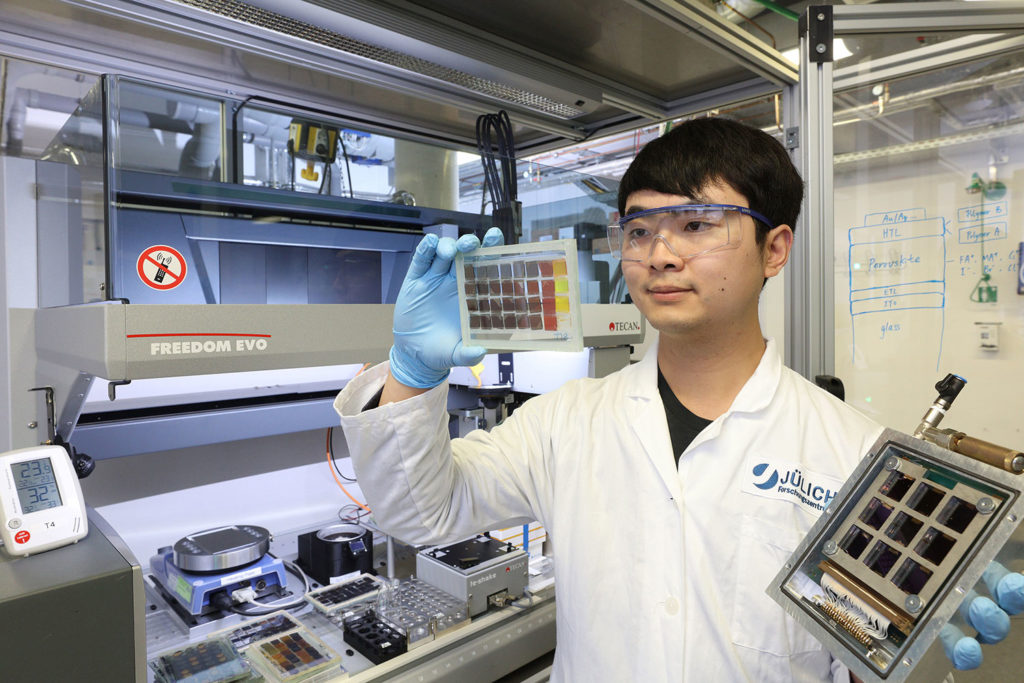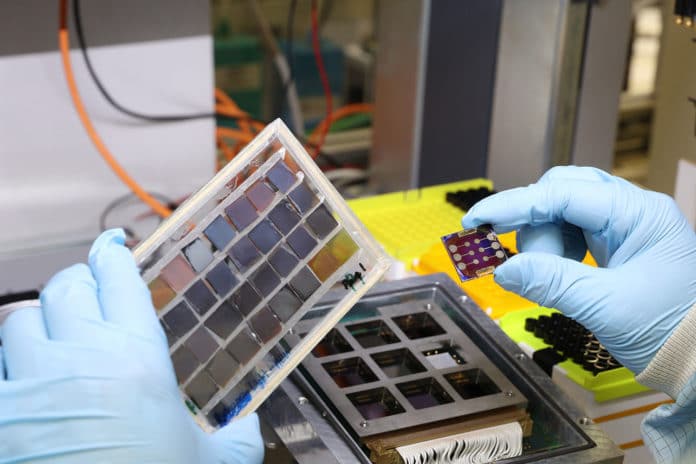Perovskites are the great hope for further increasing the efficiency of solar modules in the future. Until now, their short service life has been considered the biggest hurdle to their practical use, but this could soon change.
Researchers from the Helmholtz Institute Erlangen-Nuremberg (HI ERN) of the Forschungszentrum Jülich have developed a planar perovskite solar cell that is claimed to reach over 1,400 hours of operational stability at elevated temperatures. In tests, the perovskite-based cell retained 99% of its initial efficiency.
Before choosing the right perovskite material for the cell, the researchers systematically tested hundreds of different perovskite mixtures and investigated, in particular, their thermal stability using a self-constructed, high-throughput screening platform.

Another important optimization step concerns the stable contacts of the perovskite within the cell, which is built up in several thin layers. The ionic dopants or metal oxide nanoparticles commonly used to contact the cell tend to undergo secondary reactions at higher temperatures. The dopant-free polymer provides an acid barrier between the perovskite and the acid-doped polymer. This reaction can even lead to corrosion of the metal electrodes, as the researchers at HI ERN were able to demonstrate through measurements and scanning electron microscopy. Contact and electrical conductivity thus deteriorate at an early stage.
To improve stability at the contact point, researchers packed the entire electrodes in a kind of protective shell with a new double-layer polymer structure, with the bottom side undoped and the top side doped with a non-ionic dopant. The structure is claimed to protect against degradation and ensures that the contact is maintained. This architecture also protects the very sensitive interface to the perovskite, and on the other hand, it shows exceptionally stable conductivity, even at elevated temperatures.
The illuminated cell had to survive 1,450 hours at elevated temperatures around 65 degrees Celsius in the laboratory and remained largely stable throughout the test period. In the end, it still had 99% of its initial efficiency. “Long-term prediction is always difficult. But the perovskite solar cell we have now developed could certainly be operated for more than 20,000 hours under normal circumstances,” estimates Prof. Christoph Brabec of the Helmholtz Institute Erlangen-Nuremberg (HI ERN) at Forschungszentrum Jülich.
For the future, the HI ERN researchers are now aiming for further efficiency improvements. “With an efficiency of 20.9%, the tested cell does not yet fully exploit the potential. 24 to 25% should be possible in the near future,” explains Dr. Yicheng Zhao, who played a key role in the research.
